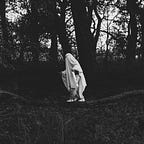Resource Research: “Age of the Image: A New Reality” Documentary — Episode 1
Introduction to Visual Communication
3 min readNov 9, 2020
- In the 1890s Thomas Edison and his assistant William Dickson developed a camera to capture time and movement in still images. Their innovation was celluloid film using gears of the camera to pull the film past the lens, recording each frame in turn for e.g. “photograph, move, photograph, move, and so on, up to 40 times a second”. Watched back film created the illusion that the photos were moving; giving birth to cinematography as we know it today. Film similar to Edison’s quickly became industry standard and over the next century grew bigger.
- Soon after Edison, “Kodak” released a new product — the “Brownie”. One of the first point-and-shoot cameras, changing photography from stiff, posed portraits to more informal snapshots of people looking relaxed. Jacques Henri Lartigue, unbeknown to his child self was one of the first masters of the snapshot aesthetic and shared the same obsession with Edison — catching time.
- Thanks to the breakthroughs in science and engineering such as the first X-ray by physicist Wilhelm Conrad Roentgen of his wife’s hand, in 1895 and, the first engine powered flight by Orville and Wilbur Wright, in 1903. Humans could now see the world from new perspectives — X-ray and aerial photography. These innovations inspired art to become more three-dimensional i.e. landscapes painted from birds-eye view and portraits that pierced the body.
- During WW1, photographer, Frank Hurley found it so difficult to capture the actual fighting, that occasionally he complied his images from multiple negatives. This dark room manipulation started the growing post-production process we have today. People rapidly mastered tampering with images, first with scalpels, then pixels on computers, until it became more or less impossible to differentiate the real from the unreal.
- Towards the end of the 19th century, the “Halftone” process converted photographs or negatives into a series of dots, making them cheaper and easier to print. By 1919, newspapers and magazines were full of photographs. Hannah Hoch, worked at the largest publishing house in Berlin, inspired by the imagery in front of her she would flick through the printing publications and cut out any photos that interested her. She would then stick them next to other images, creating striking, amusing and unsettling juxtapositions — this method coined the name “photomontage”. She used photomontages to shock her audience, often distorting and disfurgering her subjects to create surreal narratives.
- Film makers relocated to Hollywood in 1910 and cinematography at this time was manipulated through merging different shots. To do so, directors developed techniques, to make all of their shots cohesive and look like they belong to a seamless flow of events — i.e. the “Continuity system” (1. “Establishing-shot”, so the audience could establish where they were, 2. “Mid-shot”, to draw attain to the main character, 3. “Close-up”, so viewers could see the characters facial expression, 4. “Reverse-shot”, divulged what the character had seen and 5. “180-degree rule” when filming conversations, to avoid them looking like they’re talking to themselves).
- Scientist Dr. Harold E. Edgerton in the 1930s used stroboscopic lights to make images and produce high-speed photography, for the first time. He would direct a strobe light at an object, to make it appear slow down or even frozen. In addition to that, he would connect strobes to film cameras producing slow-motion videos, never seen before.
